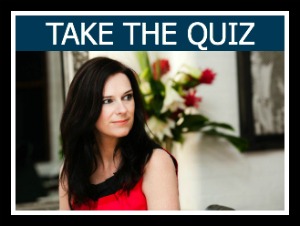Working too hard: all work and no play!
 Uhummm. Yes, hands up, you caught me….I’m guilty as charged! This time it's for working too hard and not taking enough time out to rest and play. And that’s a BAD thing! And I know better. Doh!
Uhummm. Yes, hands up, you caught me….I’m guilty as charged! This time it's for working too hard and not taking enough time out to rest and play. And that’s a BAD thing! And I know better. Doh!
I’m going to explain by starting right at the beginning. We’ve all heard the old adage “Work hard – play hard”. But what does it mean to you? And do you really know how to do apply it, especially when you’re an entrepreneur or even worse an entrepreneur starting out in business?
[box]“You'll never succeed in idealizing hard work. Before you can dig mother earth you've got to take off your ideal jacket. The harder a man works, at brute labor, the thinner becomes his idealism, the darker his mind” – D H Lawrence TWEET THIS[/box]
Imagine if you could get a lot more done at work, a lot better. Imagine if you could really relax every day and then be rearing to go to work the next day with your ‘batteries’ fully charged and your brain fully focused. Imagine not working too hard!
Two years ago I read an incredible book by Jim Loer and Tony Schwartz, “The Power of Full Engagement.” I was on my way to Johannesburg to meet my new team and I felt I needed to be even more bright and perky. Anyway, the book is amazing in so many ways, but the most memorable lesson for me is that we need to fully engage in both work and play to get the most out of our focus and lives.
Jim and Tony examined the way we lived in digital time. They observed that our pace is rushed; it's rapid fire and relentless. Facing crushing workloads, we try to cram as much as possible into every day. We're wired up, but we're melting down. They found that time management as a solution was not viable. Instead, by researching peak performing athletes and then C-Level executives, they found that managing energy was the way to enduring high performance – as well as to health, happiness and life balance.
Anyway, getting back. Let me explain exactly what I mean about the detriments of working too hard.
Have you ever worked hard for the whole day? You’ve got a million things done. You’ve put in a day’s work, spoken to prospects and clients, sorted out the kids (done the school runs, homework, form filling, fed them, washed their clothes, washed them, and split up the sibling fights) and the housework, and it’s 8 pm and you can’t even think straight anymore.
So you’ve sat down in front of the TV, with the kids to watch your favourite program, and it’s downtime – or so you think. Unfortunately, however, your conscious/thinking brain has other ideas. It steps in and wisely advises you, during the commercial break, that despite being fully deserving of this ‘couch potato’ moment you’ve forgotten to do something that’s super critical for your business.
Of course, in most cases nothing is required. What is needed is method for learning how to fully disengage from work.
When you don’t disengage, you live in the grey zone – the zone between engaged and disengaged; a zone when you’re NOT focused and are least productive. You end up neither fully rested, nor fully satisfied with your day’s work. You end up going to bed and feeling dissatisfied with being an entrepreneur, like this work thing is never-ending and that perhaps it was better being an employee!
So what’s the solution?
Well in theory, it’s easy, but in practical terms it’s hard to implement. Here are three tips to help you though.
Step 1: Awareness
You can’t even begin to fix something, if you don’t know it’s happening. So check yourself, become aware. Every time you rest make sure you really are. Every time you work do the same. Be present in the moment and stop working too hard.
Step 1: Preparation
When you catch yourself in the grey zone be prepared to check yourself. The easiest way to do this is with language. Give your behaviour a trigger name, something that’s memorable and brief. That way your brain has easy access to the solution – fast.
Step 3: Action
As soon as you notice what you’re doing i.e. the problem – take action to correct it. Take action right away. RIGHT AWAY. Yes – not in two minutes time, but immediately! By doing this you’ll begin to treat the issue consciously and then it will become an automatic response to make sure all distractions are cleared.
So I wish you well with this very normal issue for entrepreneurs. Please let me know what are your thoughts on this? What does “work hard – play hard” means to you? And how you cope with it? Are you guilty like me of working too hard and not being present in the moment for much of the time or have you found a way to accomplish this? Please share your experiences and feedback in the comments below as I’d love to hear. Finally, thank you, as always for reading and contributing here. If you found this useful, please share it with your friends!
With love and gratitude – as always,











Follow Us